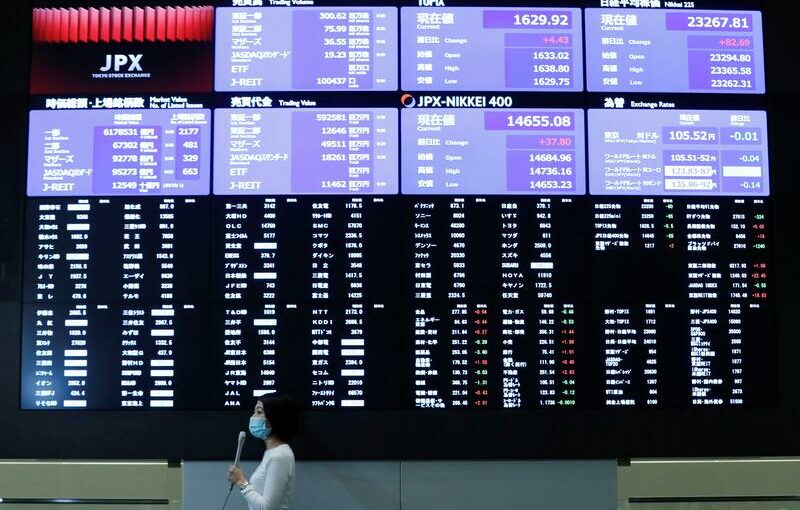SYDNEY (Reuters) – Asian shares rallied on Monday while the dollar held near three-month peaks after the U.S. Senate passage of a $1.9 trillion stimulus bill augured well for a global economic rebound, though it also put fresh pressure on Treasuries.
There was also upbeat news in Asia, as China’s exports surged 155% in February compared with a year earlier when much of the economy shut down to fight the coronavirus.
BofA analyst Athanasios Vamvakidis argued the potent mix of U.S. stimulus, faster reopening and greater consumer firepower was a clear positive for the dollar.
“Including the current proposed stimulus package and further upside from a second-half infrastructure bill, total U.S. fiscal support is six times greater than the EU recovery fund,” he said. “The Fed is also supportive with U.S. money supply growing two times faster than the Eurozone.”
The prospect of yet faster growth helped MSCI’s broadest index of Asia-Pacific shares outside Japan firm 0.5%. Japan’s Nikkei gained 0.9%, and Chinese blue chips 0.7%.
S&P 500 futures rose 0.3%, after a sharp turnaround on Friday. EUROSTOXX 50 futures caught up with Wall Street by rising 1.2% and FTSE futures 1.3%.
Equity investors took heart from U.S. data showing nonfarm payrolls surged by 379,000 jobs last month, while the jobless rate dipped to 6.2% in a positive sign for incomes, spending and corporate earnings.
U.S. Treasury Secretary Janet Yellen tried to counter inflation concerns by noting the true unemployment rate was nearer 10% and there was still plenty of slack in the labour market.
Yet yields on U.S. 10-year Treasuries still hit a one-year high of 1.625% in the wake of the data, and stood at 1.59% on Monday. Yields increased a hefty 16 basis points for the week, while German yields actually dipped 4 basis points.
The European Central Bank meets on Thursday amid talk it will protest the recent rise in euro zone yields and perhaps mull ways to restrain further increases.
The diverging trajectory on yields boosted the dollar on the euro, which fell away to a three-month low of $1.1892, and was last pinned at $1.1926.
Ned Rumpeltin, European head of FX strategy at TD Securities, said the break of chart support at $1.1950 was a bearish development which targeted $1.1800.
“The solid U.S. employment report could be the final missing piece of the stronger USD narrative,” he added. “This should put the dollar in a much stronger position relative to other major currencies.”
The dollar index duly shot up to levels not seen since late November and was last at 91.897, well above its recent trough of 89.677.
It also gained on the low-yielding yen, reaching a nine-month top of 108.63, and was last changing hands at 108.40.
The jump in yields has weighed on gold, which offers no fixed return, and left it at $1,713 an ounce and just above a nine-month low.
Oil prices were up the highest levels in more than a year after Yemen’s Houthi forces fired drones and missiles at the heart of Saudi Arabia’s oil industry on Sunday, raising concerns about production.
Prices had already been supported by a decision by OPEC and its allies not to increase supply in April. [O/R]
Brent climbed $1.70 a barrel to $71.06, while U.S. crude rose $1.63 to $67.72 per barrel.
Source: Read Full Article
